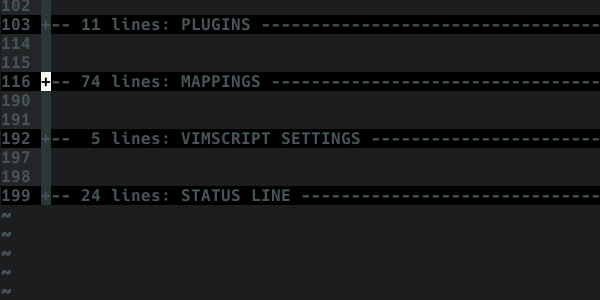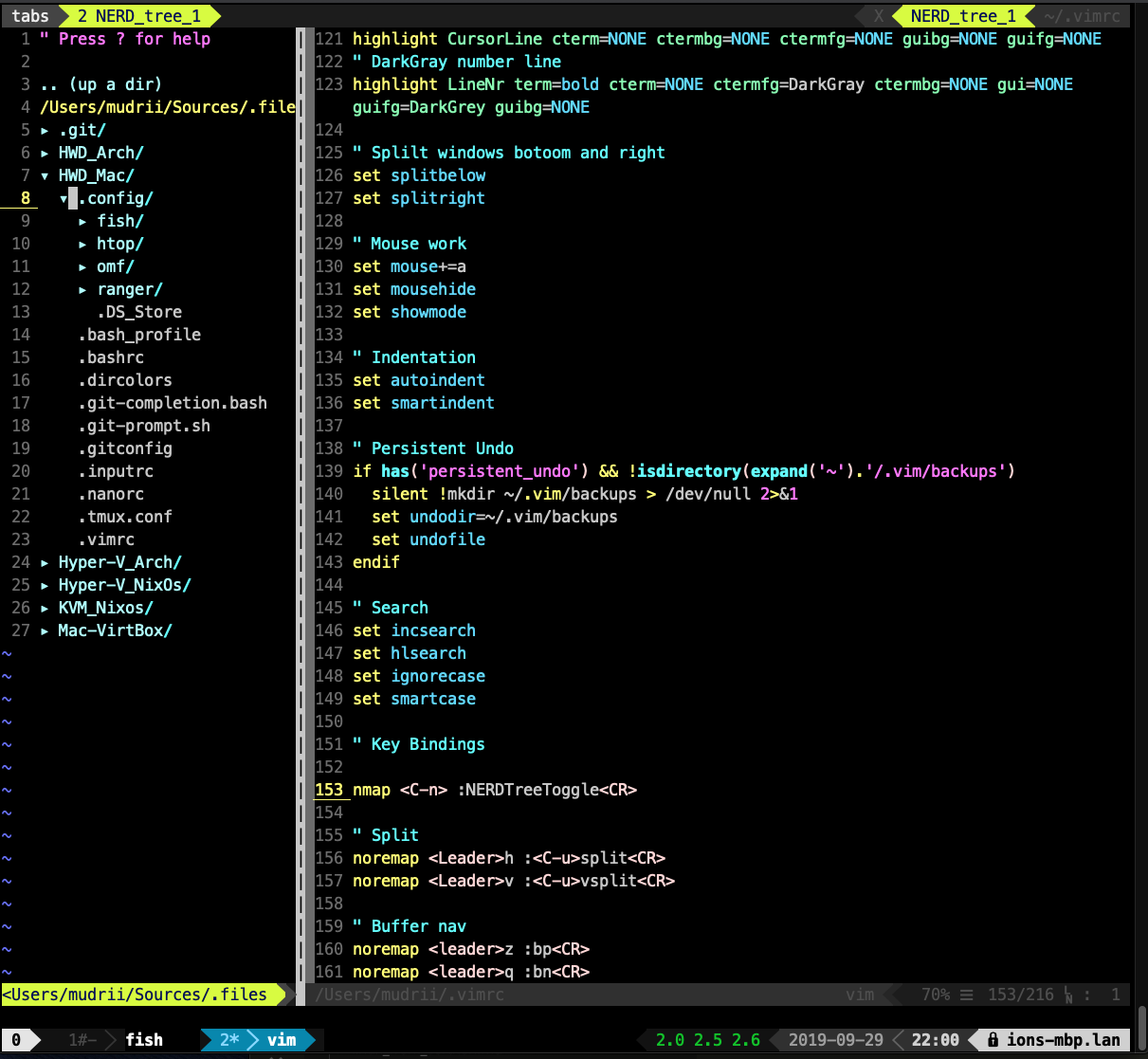

#MAC VIM CONFIG FILE HOW TO#
You should know that how to open/save/close a file in vi or vim text editor in your Apple Mac os operating system. version Print version information and exit Conclusion h or -help Print Help (this message) and exit clean 'nocompatible', Vim defaults, no plugins, no viminfo startuptime Write startup timing messages to S Source file after loading the first file cmd Execute before loading any vimrc file
#MAC VIM CONFIG FILE WINDOWS#
o Open N windows (default: one for each file) p Open N tab pages (default: one for each file) ttyfail Exit if input or output is not a terminal not-a-term Skip warning for input/output not being a terminal r (with file name) Recover crashed session N Not fully Vi compatible: 'nocompatible'

m Modifications (writing files) not allowed Or: vim -t tag edit file where tag is defined If you want to see more info about the vi or vim command, just type the following command: $ vim -help If you want to exit the vi or vim text editor without saving the changes, and you need to switch to normal mode by pressing Esc key, and type :q! command, then press Enter key. If you want to save and exit the current file in vi or vim text editor, and you need to press Esc key to back to normal mode, and type :wq command, then press Enter key in your keyboard. If you need to save the file that you have opened, and you need to back to normal mode by pressing Esc key, and type the below command, and then press Enter key. And if you want to back to the normal mode, and you just need to press the Esc key. 01:23 The Vimrc file can be as minimal as the one weve just created or much more complex, loading other scripts that add more functionality to the editor. Now we have all these settings in place, and we didnt need to enable them one by one. Note: if you want to type the text in your file, and you need to enter the insert mode by pressing the i key in your keyboard. With these settings in place, well save and quit Vim, then open our sample.js file again. This entry was posted in and tagged.If you wish to open a file named mytest.txt using vi/vim text editor in your Apple Mac os operating system, and you can type vim command followed by the name of the file that you want to open: $ vim mytest.txt Just try different ones by changing the.vimrc file and find the one you like best. To see what color schemes ship with Mac OS, look at /usr/share/vim/vim73/colors The.vim files in this directory are the color schemes. But what if you don’t care for the default color scheme? We can set the color scheme by adding a second line to the.vimrc file like so: syntax on colo desert My favorite color scheme is desert, I find it works nice with my preferred Terminal color scheme (Homebrew). To turn on syntax highlighting, we can simply create a text file by that name and add this line: syntax on vim will now use syntax highlighting the next time a file is opened. Set nowritebackup The file for controlling vim settings for the user is /.vimrc By default, this file does not exist. set nowritebackup ' Don't write backup file if vim is being called by 'chpass' au BufWrite /private/etc/pw. If you want true vi-compatibility ' remove change the following statements set nocompatible ' Use Vim defaults instead of 100% vi compatibility set backspace=2 ' more powerful backspacing ' Don't write backup file if vim is being called by 'crontab -e' au BufWrite /private/tmp/crontab. On a new build of 10.9, here is what the file contains: ' Configuration file for vim set modelines=0 ' CVE-2007-2438 ' Normally we use vim-extensions. Changes made to this file will affect all users of the machine. usr/share/vim/vimrc is the file that will control the global settings. Settings for vim are controlled by two files, one controlling settings globally and the other controlling settings for the user. By default, however, syntax highlighting is not turned on.
#MAC VIM CONFIG FILE MAC OS X#
Mac OS X ships with the vim editor, which supports syntax highlighting.


 0 kommentar(er)
0 kommentar(er)
